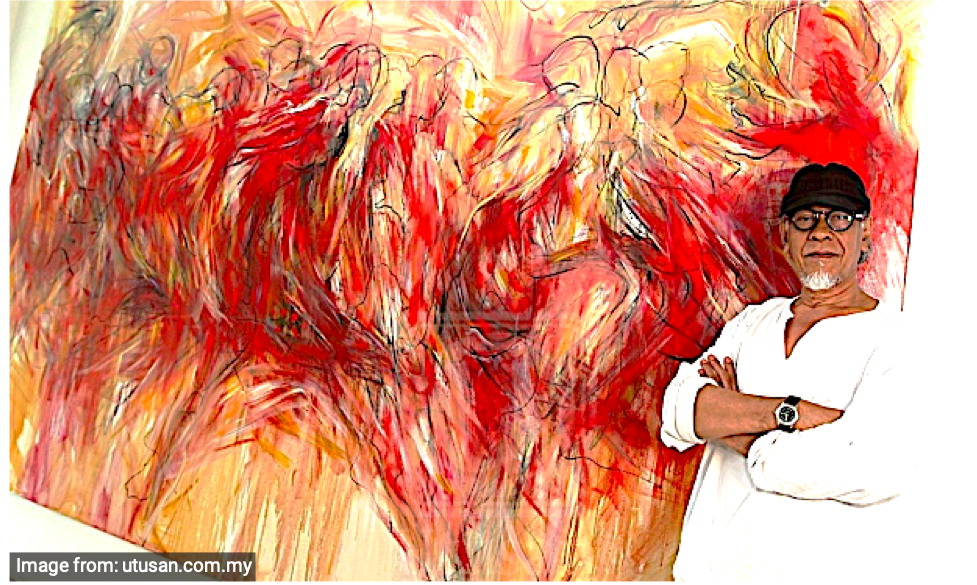
Criticising the society through paintings is how Yusof Ghani, a talented and respected Malaysian artist since the 1980s, shares his artistic views of the world.
Graphic artist turned Abstract Expressionist Yusof Ghani was born in Johor in 1950. He turned from graphic to fine arts when he received a scholarship from the government to study graphics arts at George Mason University in 1979, where he met art professor Walter Kravitz.
He soon became interested in painting, and before long, he had his first solo exhibition at the prestigious Anton Gallery in Washington D.C.
When he returned to Malaysia, his career continued to bloom as his paintings gained more recognition through the years.
Biring represents culture and history

Source
Yusof Ghani is known for a series of his masterpieces, such as Tari (dance), Topeng (mask), and Wayang (theatre).
The Biring series is another art masterpiece, inspired by the controversial cockfighting blood sport which was once famous in Malaysia.
Cockfighting is a sport held for a fight between two male chickens (berlaga ayam) in a ring called cockpit. The game ends when one of the chickens dies or is seriously injured.
The painting, which is of a rooster, brings back the kampung scene, where cockfightings used to take place.
It is also a symbol of power, might, dexterity, and determination, which makes Biring a depiction of an artistic aspect of a culture and history.
Above all, Biring captures the moment of battle between the two chickens in their fight for life, apart from it being a symbolic portrait of conflicts and tensions that exist within humankind.
The faces of humanity through Wajah
There are several art pieces in the Wajah (face) series – a collection of paintings depicting Yusof’s response to evolution of humanity in social and cultural sense.

Source
The first piece of the Wajah series was painted in 2006 and named Abettor, which carries the meaning of “one associated with another in wrongdoing”.
The use of the earthly shade of amber gives a sense of dimness and darkness that portrays the tension, struggle, and ambiguity, while the roughness of the painting’s surface signals the intensified emotion.
The whole painting tells the story of the dark side of humanity, with the initial idea of slaughtering of animals inspired by the previous Biring series.
While Biring captures the strength of the roosters forced to fight for humans’ pleasures, Abettor brings those pleasures to life through its expressive abstract. It shows the cruelty of humans who are willing to do anything for the sake of their own excitement and desire.
Another piece from the Wajah series is called Entourage IV. Painted in 2007, it reveals the portraits of 72 eyeless faces of different features and appearances on small canvases in row.

Source
In this painting, Yusof adopted Pop Art Movement technique to bring out the composition. Red, yellow ochre, black and white differ each canvas. The colours of the faces are clear on some parts, while others seem clouded from a distance.
The use of the repetition of coloured shapes, textures, and linear directions provides a sense of unity, while the composition of the grid-structured canvases indicate the variety of human personalities.
Yusof now owns a gallery called Tapak Gallery, located in Shah Alam, Selangor where his art collections are exhibited for the visitors’ eye candy.
In his older years, Yusof continues to paint pieces that deal with contemporary issues concerning Malaysian society, famine and injustice, the nation’s history, distortions of Asian motifs, and even politics.
“Every artist has his own flow, and that is why all my works, since the Tari series and the Wayang series, carry social critics. The conflicts that I bring forward through abstracts happen in today’s society.” – Yusof Ghani, March 2006.

